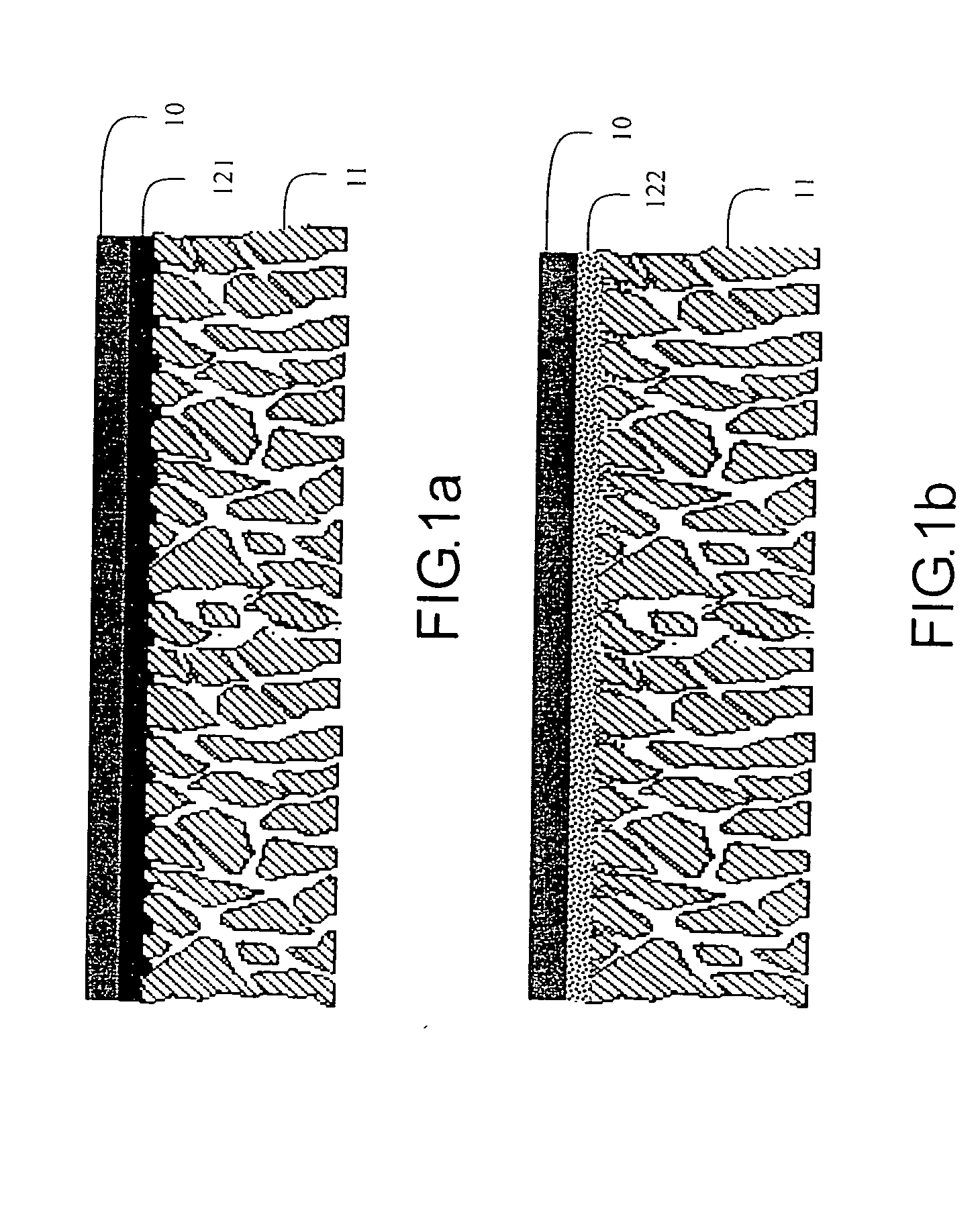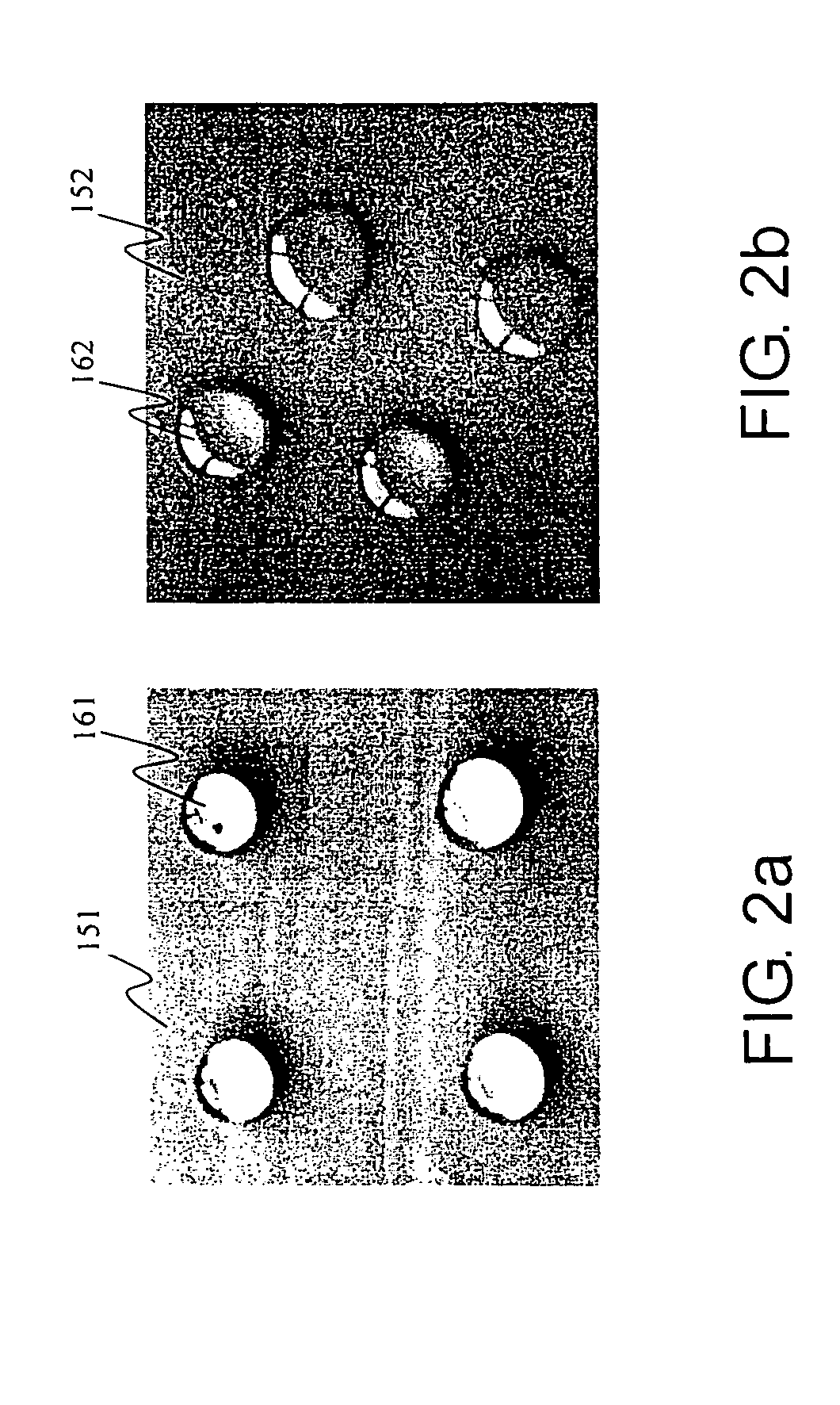Oil/gas separation membrane, its use in gas sensor and process for producing the same
a gas sensor and separation membrane technology, applied in the field of oil/gas separation membrane, can solve the problems of powerless detection of faults that have developed quickly, separation of gases must be carried away, method still suffers an obvious drawback, etc., and achieves the effect of not losing mechanical properties and permeation efficiency
- Summary
- Abstract
- Description
- Claims
- Application Information
AI Technical Summary
Benefits of technology
Problems solved by technology
Method used
Image
Examples
example 1
[0065] Bulk polymer membrane: the selected membrane must be stable, oil-resistant, temperature-resistant, permeable to fault gases and impervious to oil. In practice, PTFE, PVDF, PFEP, and PFA are good choices. According to the preferable embodiment, PTFE membrane obtained from Saint-Gobain Advanced Materials, Taiwan, is applied. It is worth to mention that thickness of the membrane is ranged between 0.01 to 0.5 mm, preferably, ranged between 0.025 to 0.125 mm.
example 2
[0066] Porous metal frit disk: the selected porous metal frit disk is prepared by metal powders under a high temperature and a high pressure circumstance. It is noted that the metal frit disk must have a good mechanical strength to support the bulk polymer membrane, and a high porosity to allow quasi resistant-free gas permeation.
[0067] In practice, the stainless steel, bronze and nickel are good choices. The preferred embodiment of the present invention utilizes the sintered stainless steel frit disk obtained from GKN Sinter Metals, Germany, with the porosity greater than 20%, preferably between 35-55%, pore size between 0.001-0.1 mm, preferably between 0.005-0.02 mm, and thickness between 1-5 mm.
example 3
[0068] Adhesive: the selective adhesive must have good chemical compatibility with the polymer membrane and porous metal frit, and more importantly have extremely high gas permeability so that the presence of this adhesive will affect very little, if not, the overall gas permeation. There are two preferred embodiments in the present invention:
[0069] First, a solution made with amorphous high permeable polymer, namely (tetrafluoroethylene) / (2,2-bis-perfluoromethyl-4,5-difluoro-1,3-dioxole) copolymer, or P (TFE / PFD) from E.I. Du Pont de Nemours and Company, Wilmington, Del. The copolymers are available under the Trade Name “Teflon AF” in grades such as 1600 and 2400, having Tg's of 160 and 240° C., respectively. The difference between Teflon AF 2400 and Teflon AF 1600 is in their mole ratio of TFE / PFD which are 13% / 87% and 35% / 65%, respectively. Teflon AF has permeability 1-2 magnitudes higher than bulk PTFE membrane, taking hydrogen as an example, the H2 permeability in PTFE is 7.4 ...
PUM
| Property | Measurement | Unit |
|---|---|---|
| Temperature | aaaaa | aaaaa |
| Temperature | aaaaa | aaaaa |
| Length | aaaaa | aaaaa |
Abstract
Description
Claims
Application Information
 Login to View More
Login to View More - R&D
- Intellectual Property
- Life Sciences
- Materials
- Tech Scout
- Unparalleled Data Quality
- Higher Quality Content
- 60% Fewer Hallucinations
Browse by: Latest US Patents, China's latest patents, Technical Efficacy Thesaurus, Application Domain, Technology Topic, Popular Technical Reports.
© 2025 PatSnap. All rights reserved.Legal|Privacy policy|Modern Slavery Act Transparency Statement|Sitemap|About US| Contact US: help@patsnap.com



